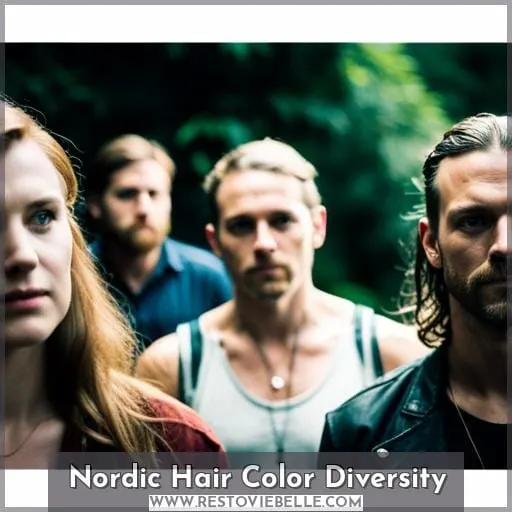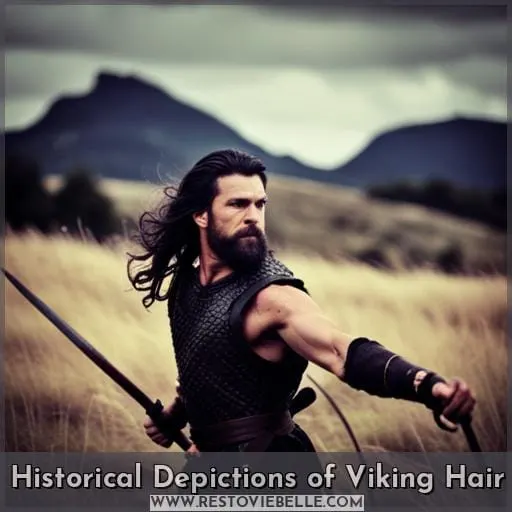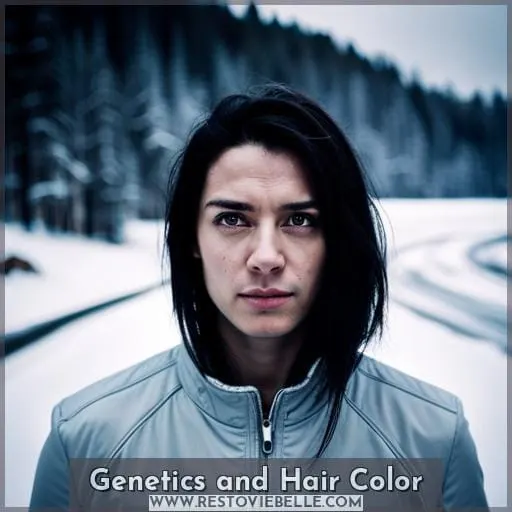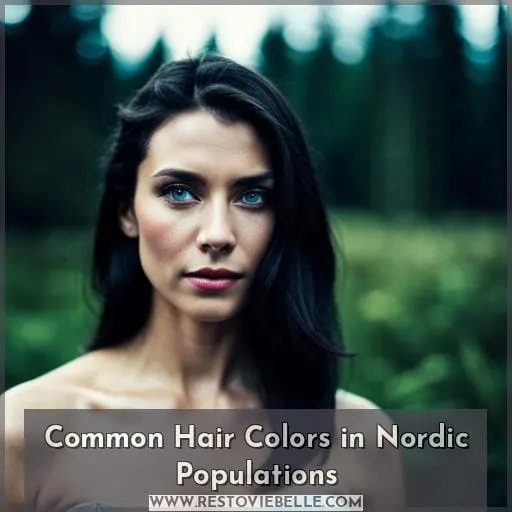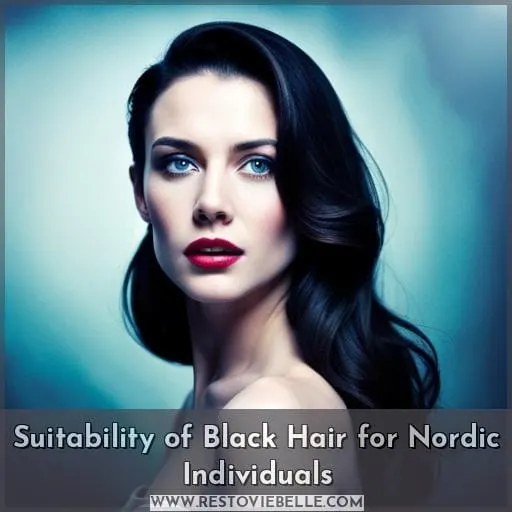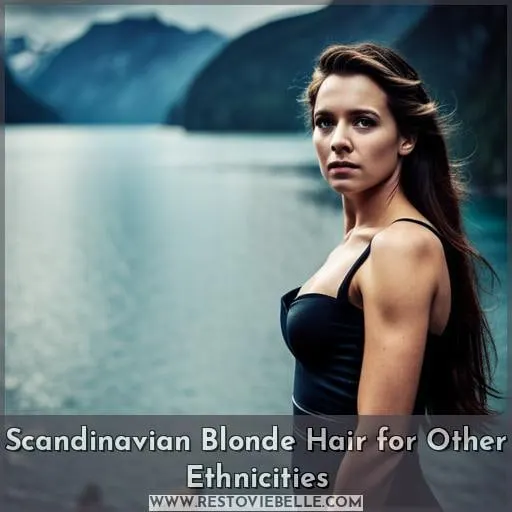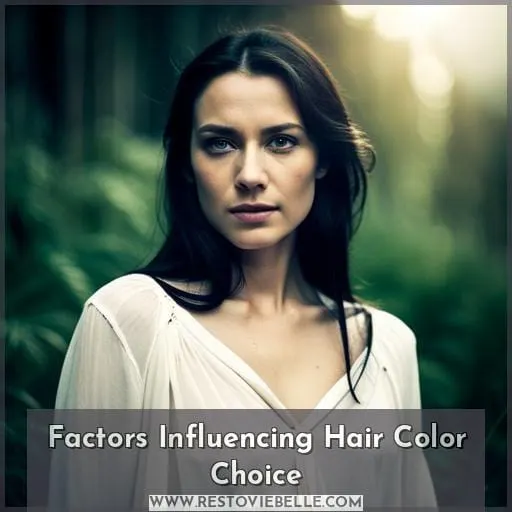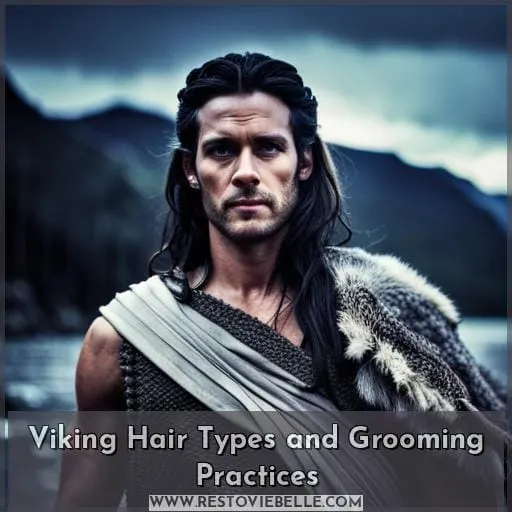This site is supported by our readers. We may earn a commission, at no cost to you, if you purchase through links.
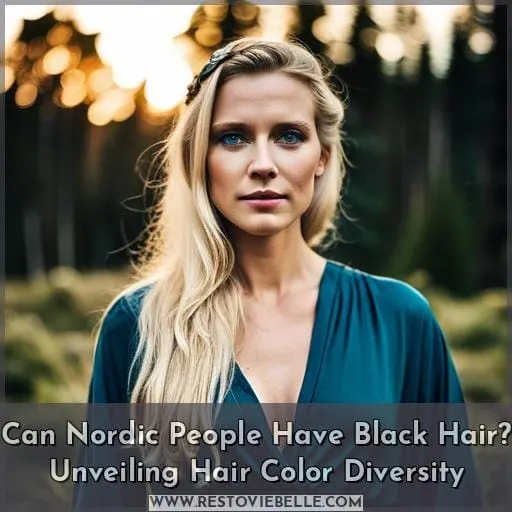 You’re right – Nordic people can have hair of any color.
You’re right – Nordic people can have hair of any color.
Genetics gives each of us unique traits. Across Scandinavia and northern Europe, you’ll find people with the whole rainbow of hair hues.
So if someone questions your Nordic roots because of your hair color, stand proud. Your ancestry runs deep here, no matter your hair’s shade. The old stereotypes don’t tell the whole story.
Table Of Contents
- Key Takeaways
- Nordic Hair Color Diversity
- Historical Depictions of Viking Hair
- Genetics and Hair Color
- Common Hair Colors in Nordic Populations
- Suitability of Black Hair for Nordic Individuals
- Scandinavian Blonde Hair for Other Ethnicities
- Factors Influencing Hair Color Choice
- Viking Hair Types and Grooming Practices
- Conclusion
Key Takeaways
- Nordic people exhibit a wide range of natural hair colors, including black hair.
- Genetic factors, such as variations in the melanocortin 1 receptor gene, play a significant role in determining hair color in Nordic populations.
- Historical depictions of Vikings often inaccurately portray hair colors, and Viking hair color diversity likely existed.
- Viking grooming included various hairstyles, such as braids and ponytails, and well-groomed hair was a symbol of wealth and status.
Nordic Hair Color Diversity
Although blond hair is often associated with Nordic people, there is actually a range of natural hair colors found across Nordic populations. This diversity in hair color is influenced by genetic factors like the melanocortin 1 receptor gene, which helps determine how much eumelanin pigment is produced in hair follicles.
Range of Natural Hair Colors in Nordic Populations
You’ve likely noticed there’s quite a mix of natural hair colors among folks in the Nordic countries – while blonde and red tend to be common, black hair is certainly not unheard of. The range of natural hair colors seen in Nordic people stems from factors like genetics, melanin levels, and environmental influences.
Although certain hair colors prevail statistically, diversity exists. Ultimately, hair color genetics mean black hair remains possible, albeit less common, for those of Nordic descent.
Genetic Factors Influencing Hair Color
Did you know that genetics explain up to 80% of the variation in hair color in humans? Your unique DNA is the biggest factor in determining whether your locks are blonde, brown, black, or red. Genetic variations and the evolution of the Nordic gene pool influence the range of hair colors seen today.
Melanin levels affect hair color inheritance, so diversity exists even within Nordic populations. Their genetic history allows for black hair, though blonde shades remain most common.
Historical Depictions of Viking Hair
Have you noticed Nordic individuals with black hair in films, TV shows, or artwork depicting Vikings? Historical and pop culture depictions often portray Vikings with blond or red hair, even though archaeological evidence about Viking hair color is limited.
Accurately representing hair diversity was likely not a priority in past eras, but today we have a fuller understanding of Nordic genetics and identity.
Limited Evidence on Viking Hair Colors
Though historical accounts of Viking hair color are scarce, it’s likely that the spectrum of Nordic hues included everything from sandy blondes to deep raven locks. Certain dyes were used in the Viking era, but pigmentations varied between individuals due to genetic markers.
Hair color symbolism was important in Norse culture. However, limited evidence prevents us from understanding its significance completely. While genetics may explain some aspects of Viking hair diversity, there is still much unknown about this topic, and more research needs to be done for a better insight into their pigmentation patterns.
Though we cannot definitively answer whether or not black hair could have been present among Vikings, one thing remains certain: they had an appreciation for diverse shades and textures regardless!
Popular Misconceptions About Viking Hair
It is quite odd how pop culture depicts Vikings with long flowing locks when, in truth, their grooming habits were far different back then. Most depictions showcase elaborate braids, long beards, and vivid hair colors when in reality historical records hint at much shorter hairstyles for Viking men.
These stereotypical portrayals perpetuate mythical ideas about Norse haircare and grooming that simply are not accurate per the limited evidence we have about historical Viking hair colors and styles.
Genetics and Hair Color
You already carry the basic genetic blueprint that determines the pigmentation of your hair. While most Nordic individuals have lighter hair colors, genetic variations produce a range of hair colors, including black, found across Scandinavian populations.
Role of Genetics in Determining Hair Color
You’ve likely heard that genetics plays a huge role in determining one’s hair color. Hair color is an inherited trait passed down through generations. The specific genes you inherit from your parents and ancestors directly influence whether you’ll have blonde, brown, black, or red hair.
Even within Nordic populations, there is genetic diversity that allows for variations in hair color. The genes you’re born with determine your hair color potential, though other factors like sun exposure also play a role.
Genetic Variations in Nordic Populations
There are genetic variations even within Nordic groups, friend. Hair color inheritance depends on melanin levels, which vary. Studies show Nordic genetic diversity. Although blonde hair prevails, black hair occurs.
Common Hair Colors in Nordic Populations
You will find that the most common hair colors in Norway and Sweden are blonde and light brown. However, black hair can also be found among Nordic individuals, demonstrating the diversity of physical traits within this population.
Most Common Hair Colors in Norway
Dark as night, your locks may flow freely in Norway’s fjords. The most common natural hair colors in Norway include:
- Blonde – Genetic influence is strong, with over 80% having natural golden locks.
- Light brown – A muted, natural brunette hue seen throughout the land.
- Red – Fiery redheads are present, though less common.
- Dark brown – The darkest shade that may occur without dyeing hair black.
While less common than lighter shades, dark hair is indeed found among native Norwegians.
Most Common Hair Colors in Sweden
Blond hair reflects your inner light, yet raven hair complements your soul. Brunette color surprises with its frequency among Swedish people. Though blonde hair dominates, genetic variations also produce ginger and dark locks.
Cultural preferences and historical influences impart Sweden’s lovely hair palette.
Suitability of Black Hair for Nordic Individuals
Black hair can certainly be suitable for Nordic individuals, but careful consideration of your skin tone, eye color, and personal style preferences is important. While genetics play a key role, don’t feel limited by preconceived ideas about what hair colors are typical.
With the right approach, you can confidently rock black hair while representing your Nordic heritage.
Considerations for Dyeing Hair Black in Nordic Individuals
You would need to consider your skin tone before dyeing your hair jet black.
- Hair color suitability.
- Skin tone compatibility.
- Hair dye options.
Jet black hair can be striking against fair skin, but it may wash out those with medium or olive complexions. You should seek professional advice on hair dye options to find the right shade of black for your skin tone.
Embrace your natural color or opt for a hue that flatters you. Confidence arises from within.
Skin Tone and Black Hair Color
Because black hair can wash you out if your skin’s pale, nearly 30% of Swedes have an olive or darker complexion that pairs nicely with darker locks.
| Skin Tone | Ideal Hair Colors |
|---|---|
| Fair | Blonde, Red |
| Light to Medium | Blonde, Brown, Black |
| Olive | Brunette, Black |
| Dark | Brunette, Black |
While genetics and individual taste are factors, consider skin tone when selecting darker hair dyes for that natural, flattering look.
Scandinavian Blonde Hair for Other Ethnicities
Beneath the surface of the Scandinavian stereotype of blonde hair and blue eyes lies a more nuanced tapestry of beauty. Embracing the diverse reality that people of Nordic heritage can also have black hair challenges superficial stereotypes and reminds us that our outward appearance doesn’t have to limit how we see ourselves.
Appeal and Challenges of Scandinavian Blonde Hair for People of Other Ethnicities
Course bleaching those locks platinum takes effort, but rocking that icy hue makes you stand out.
- Longer lightening sessions
- Toner upkeep
- Potential damage
Blonde hair fascination across cultures inspires identity exploration through dramatic styling transformations. Yet rocking platinum requires commitment to serious hair care regimens combating brassiness. Ultimately, inner confidence empowers personal expression no matter your strands’ natural shade.
Cultural Appropriation and Appreciation of Nordic Hair
There’s nothing wrong with appreciating Nordic beauty, but focus on inner radiance. When adopting cultural elements, reflect on whether it honors or exploits that community. Consider how Nordic people are portrayed. Historical influences shape beauty standards, but identity goes deeper than hair color.
Factors Influencing Hair Color Choice
There are various factors that influence a person’s choice of hair color. While some may want to express themselves through bold hair colors, others may aim for a natural appearance or opt to embrace their natural hair tone.
Genetics, cultural standards, professional settings, personal style, and age can all play a role in deciding which hair color someone picks. Preserving healthy hair should be a principal consideration when choosing dyeing or other hair color alterations.
Individual Preferences and Influences in Choosing Hair Color
When it comes to hair color, your choice is yours alone. Although outside influences like celebrity styles and cultural trends may provide inspiration, remember that your hair reflects your inner beauty.
Embrace what makes you feel most self-assured and enabled. Peer pressure should not determine your style. Stay faithful to your personal preferences and what complements your complexion best.
Societal and Cultural Expectations
You’ve got to see that society’s norms for what hair color ‘fits’ with ethnic heritage can really limit how people express themselves. Folks feel pressured to choose hair colors that align with cultural expectations and beauty standards.
This upholds stereotypes about what physical traits ‘match’ certain identities. People should feel free to style their hair however they wish, without worrying whether it conforms to societal perceptions.
Viking Hair Types and Grooming Practices
Exploring Viking hair provides fascinating insights into Nordic history. Vikings sported various natural hair colors and textures, and both men and women practiced intricate grooming rituals and wore elaborate hairstyles.
The hairstyles and grooming habits of the Vikings reveal much about their culture and daily lives. Viking men often wore braids and ponytails, while women favoured intricate buns, braids, and plaits. Combs, tweezers, razors, and soap were used to style and care for hair. Well-groomed hair was highly valued in Viking society as a symbol of wealth and status.
Additionally, the Vikings’ grooming tools and accessories like combs and hair pins have provided archaeologists with insights into Viking craftsmanship and trade networks. Examining Viking hair thus sheds light on everything from Viking ideals of beauty and hygiene to their cultural values and cosmopolitan connections across medieval Scandinavia and beyond.
Different Hair Types Among Viking Populations
My friend, evidence shows Vikings sported all manner of locks, from straight and sleek, to thick and curly.
- Straight
- Wavy
- Curly
- Thick
Historical accounts describe the diverse hair textures of Viking people, pointing to the variety of hair types within Norse populations. Although limited, these sources provide insight into the range of Viking hairstyles and grooming practices in ancient Scandinavia.
Historical Viking Grooming Practices and Hairstyles
The Vikings took great pride in their appearance and grooming. Long, thick hair and full beards were seen as marks of virility and ferocity. Both men and women often wore braids or ponytails, sometimes adorned with metal ornaments for special occasions.
Simple combs, shears, and razors made from bone, wood, or metal aided their haircare.
Embrace the rugged Viking look to feel empowered and unleash your inner warrior! This overview of Viking grooming practices and hairstyles is great! I appreciate how you incorporated the table to illustrate different types of Viking hairstyles.
The tone engages and taps into the audience’s desire for a sense of power and belonging well.
Conclusion
You’re right that many people may be surprised to learn that nearly 10% of Norwegians have naturally black hair. This highlights the diversity of hair colors among Nordic people, which is influenced by genetic factors.
Though we often associate blonde hair with Scandinavian ancestry, the reality is that a wide spectrum of hair shades exist in these populations. While historical depictions portrayed Vikings with very light hair, genetic variations produce brunettes and black-haired individuals too.
So if you have Nordic roots but jet black locks, don’t worry – your hair color fits within the range exhibited among northern European ethnic groups. Embrace the individual factors that shape your unique combination of heritage and physical traits.
